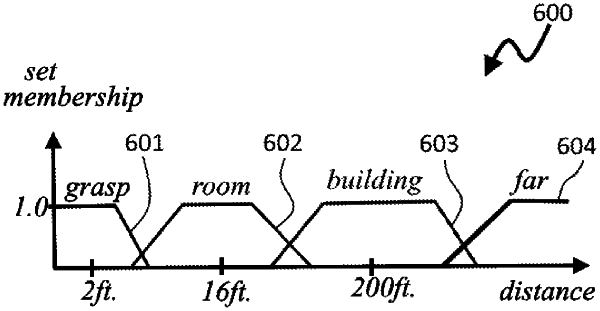| CPC G01C 21/3415 (2013.01) [G01C 21/3476 (2013.01); G01C 21/3629 (2013.01); G06F 3/011 (2013.01); G06F 3/012 (2013.01); G06F 3/016 (2013.01); G06F 3/16 (2013.01); G06F 3/013 (2013.01)] | 20 Claims |

|
1. A system for estimating relative positioning of a target object with respect to a moving object comprising:
a sensor electronics configured to output an angle sensor signal based on a direction of the target object relative to a first position of the moving object, further configured to output a position sensor signal based on a distance to a second position of the moving object relative to the first position of the moving object;
a processing device comprising a memory device, wherein the memory device stores program data comprising:
a first vector comprising information related to the direction of the target object with respect to the first position of the moving object,
a second vector comprising information related to a difference of the second position of the moving object with respect to the first position of the moving object,
a third vector comprising information related to a direction of the target object with respect to the second position of the moving object,
and a likelihood function representation comprising a predetermined mapping between a plurality of distance categories and a plurality of distance ranges;
wherein the memory device further stores a program code that when executed by the processing device, causes the processing device to:
receive the angle sensor signal and to modify the first vector based on the angle sensor signal,
receive the position sensor signal and to modify the second vector based on the position sensor signal,
receive a distance-category signal corresponding to a category of the plurality of distance categories,
generate a selected-distance signal corresponding to a point within a distance range of the plurality of distance ranges that is associated in the predetermined mapping with the category,
generate an optimal-point signal based on a distance value corresponding to the selected-distance signal and further based on an angle value associated with the first vector,
and modify the third vector on the basis of a trigonometric program code configured to receive the optimal-point signal and the second vector;
whereby based on the distance category, the third vector can comprise information related to updated angles of the target object with respect to the moving object after motion of the moving object.
|